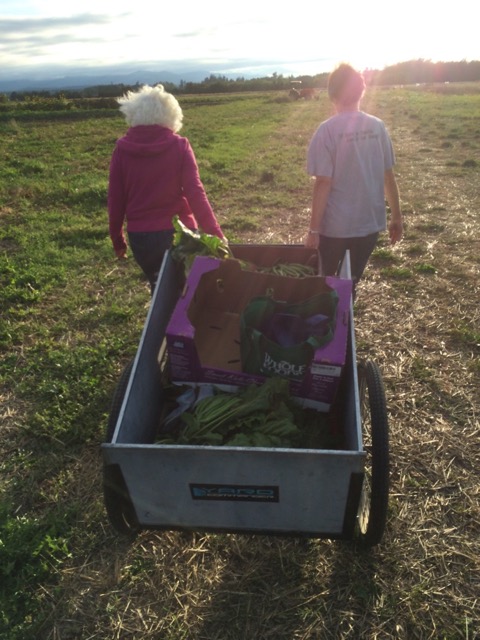“Culling is the sorting or segregation of fresh harvested produce into marketable lots, with the non-marketable lots being discarded or diverted into food processing or non-food processing activities”
-Wikipedia
The Clallam County Gleaning Program has a much less formal process for recovering culls compared with Fruit Tree Harvest and Market Recovery, however, the program finds thousands of pounds of culls. To incorporate culls into a food recovery program the coordinator/gleaners must have some flexibility. Culling is not an exact science and the amount of culled produce will change from year to year on any given crop type. Over several years some farmers may have estimates on the ratio of marketable and culled produce in terms of plantings, total poundage, and space for plantings but too many factors are at play that makes cull recovery an unpredictable pursuit. That is not to say that it is not worth the trouble by any means. Cull recovery provides the highest impact collection events in the program in terms of poundage and volume. This is due to the nature of the culling process. It would not be efficient for a farmer to have field labor sort a given crop type for one hour every day. The culling process lasts for the duration of the harvest which for a small farm may be less than a week. The bulk of culling for a given crop is usually done over a short period of time which leads to huge piles of marketable produce and culled produce. The decision on what to do with the culls is usually predetermined by the farmer and if the gleaning coordinator is not in the running to recover the culls they are headed for compost or livestock. This is why it is important to start building relationships with farmers as soon as possible. Don’t make the mistake of competing with the farmer’s pigs or chickens. In the spring while things are being planted and the air is crisp talk with local farmers about the use of their culled produce. Believe it or not, most farmers grow food with the intention of feeding people. Experience has shown that farmers are often happy to provide culls to those in need and more often than not prefer it to compost and livestock feed.
The flexibility required by a program coordinator and involved gleaners to gather culls necessitates quick response time, lots of boxes on hand and tolerance for food waste.
· The farmers that have donated culled produce to the Clallam County Gleaning Program usually give at most a 48-hour collection window. Since gleaners need to mobilize quickly a weekly email list may not be enough. It is really helpful to know if gleaners are interested and available for short notice gleans. This can be as simple as knowing what gleaners live close to the farm in question. Also, many gleaners in Clallam County Gleaning Program are retirees who have some time on their hands compared with young families. Create an emergency food recovery list and see who might be interested in joining. Often the program coordinator is the only one with the time to attend a short notice cull glean. If piles of edible food are any motivation this will not be an issue for you.
· Having boxes on hand is helpful because culls are not usually in any form of packaging. Often culls are in large piles or in large wooden bins.
· Depending on the farmer’s methodology and the gleaner’s time of arrival, the perfect edible culls you were so excited about may be mixed with some not so desirable produce.



